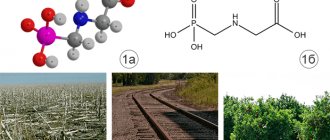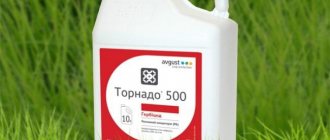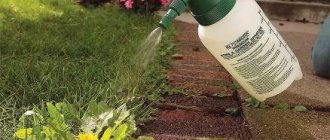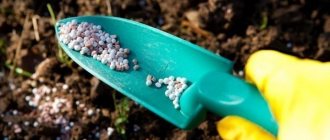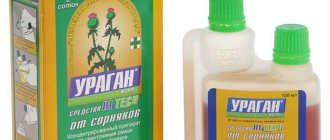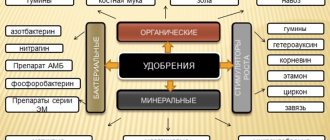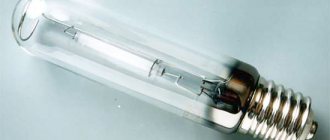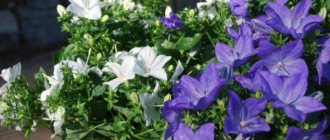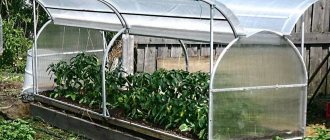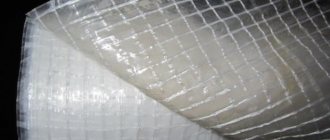What types of weeds are there?
For the purposes of effective vegetable growing, weeds are classified according to their life cycle:
- Annuals: purple damselfish, chickweed (woodlouse), field violet, odorless chamomile, field cabbage, spreading and Tatarian quinoa, field forget-me-not, common cress, annual bluegrass, blue cornflower, field larkspur, Schleicher's fume, field mustard.
- Perennial: horse sorrel, common toadflax, common wormwood, horsetail, creeping wheatgrass, Geneva grass, mouse pea.
Annuals spread by seed and grow quickly and vigorously. Most of them are spring or wintering. The seeds survive the winter well and germinate actively in spring and summer. Pulling out such weeds is effective before the flowering and fruiting period.
But even this does not guarantee that weeds will not appear again from seeds carried by the wind, animals, or hatched from dormant grains.
Perennials are not as active, but are much more difficult to weed by hand. Even if you remove the plant by the roots, there is no guarantee that no pieces of rhizome remain in the soil.
And given that many of these weeds reproduce by dividing underground parts, it turns out that the gardener, by digging them up by hand, only contributes to their further spread.
Such plants can be defeated with persistence, every spring and autumn carefully sorting the soil and removing all pieces of rhizomes. But in large areas this is unrealistic.
RULE 3. Take into account the features of soil cultivation technology
The new season begins with the preparation of the field. When choosing a soil cultivation technology, the producer must take into account that the abundance of plant residues screens the field surface and reduces the effectiveness of the use of soil preparations. Loss of herbicidal activity in such a screened field can reduce sunflower yield by 10–20%. That is why proper preparation of the field surface with minimal presence of plant residues is a necessary condition when working with soil herbicides.
Herbicides: concept, classification
Herbicides are chemical preparations that completely destroy or paralyze the growth of weeds. There are more than 1000 titles. Their advantages:
- Suitable for processing large areas.
- Effectively destroys weeds, better than manual weeding.
- Saves the farmer's time.
Minuses:
- Toxicity to beneficial microflora of soil, animals and humans.
- Improper use leads to a decrease in the quality of not only weeds, but also useful plants, up to their complete destruction.
- Frequent use of one type of herbicide against weeds increases their resistance to this drug.
- The production of herbicides is dangerous for the environment.
The classification of herbicides by type of action is extensive:
- All action. Destroy all types of vegetation in the desired area.
- Selective action. They only have a negative effect on specific types of plants.
- Above ground. Penetrate through aerial parts (stems, flowers, leaves)
- Ground. They destroy the plant by getting on its underground parts (roots).
- System. They penetrate inside, causing disruption of the plant’s life support systems, and act for a long time.
- Contact. They destroy plant tissue at the point of contact with the drug and act instantly.
There are 4 classes based on the degree of toxicity. 1 is the most dangerous, 4 includes the safest drugs.
Methods of penetration and mechanism of action
The substance has several ways of affecting weeds:
- Destruction of cell membranes. After the drug is absorbed through the leaves, active oxygen enters into an oxidation reaction with fats. As a result of this process, the cell membrane is damaged, and all contents enter the intercellular space, leading to necrosis of the plant. Damage occurs within the first day.
- Suppression of amino acid formation. Inhibition of proteins leads to stunted growth and development of the weed. The process is quite labor-intensive, so the positive effect is observed after a few days.
- Hormone-like drugs. Used on young vegetation. Artificial hormones replace natural ones, causing toxic effects. The plant grows in size, but does not have time to replenish nutrients. Weed vegetation is depleted and dies.
- Inhibition of fat formation. When using herbicides that destroy all weeds, the formation of fatty acids is suppressed and lipid metabolism is disrupted. Grass growth slows down due to inhibition of cell membranes. Death occurs within two weeks.
- Suppression of photosynthesis. The process of converting solar energy into chemical energy is important for many plants. Impaired protein synthesis blocks photosynthesis, which leads to a lack of energy in the form of ATP.
- Suppression of pigment formation. Inhibition of chlorophylls leads to the inability to carry out photosynthesis and accumulate energy. The weed dies from a lack of nutrients due to the inability to obtain them from the soil.
- Inhibition of mitosis. The product causes a change in the growth of the root system, which leads to nutritional disturbances. Cells lose their ability to divide due to blockage of proteins and fatty acids.
The best drugs
Herbicides that penetrate leaf tissue are safer for the environment than those that enter the soil. Modern preparations contain surfactants, which retain them on the surface of the leaves, preventing them from entering the soil after rain.
The safest herbicides acceptable for use in standard gardens and vegetable gardens include:
- Preparations based on glyphosate (Hurricane, Tornado, Agrokiller, GlyBest, Roundup, Chistograd). Designed for processing large green masses of perennial or annual weeds. Cultivated plants must be carefully covered. Does not affect seeds and roots located at great depths.
- Based on clopyralid (Bis-300, Gazontrel, Lontrel, Longan, Hacker). Effective against dandelion, chamomile, ragweed, sow thistle, and thistle. A selective herbicide that breaks down quickly when exposed to sunlight and oxygen. Apply to young weed shoots.
- Based on metribuzin (Lazurit, Zenkor Ultra). Acts on plant roots. Pros: very low toxicity, affordable price. Treatment – spraying the soil.
- Based on dicamba (Deimos, Lintur) and chlorsulfuron (Dicameron Grand). Both are often included in combination mixtures. For example, both substances contain Propolol. This is a broad-spectrum drug that protects plantings from 100 types of weeds. It acts by blocking the synthesis of enzymes, is environmentally friendly, and quickly disintegrates.
The best continuous action herbicides for weeds:
- Imazapyr.
- Diquat.
- Hyphosate.
- Glyphos.
- TechnoExport "Ground"
- August "Agrokiller".
All of them contain substances that penetrate into the plant through the surface of the leaves. It is enough to irrigate or spray the required areas. Continuous action weed killers are convenient for preparing large neglected areas for planting cultivated plants, before or after sowing to destroy early or perennial weeds.
They are used in vineyards and orchards between rows. Used for desiccation (processing of cultivated plants before harvesting in order to shorten the ripening time of fruits and facilitate harvesting).
The best selective preparations contain the following substances:
- Copper sulfate (Bordeaux mixture) – against dicotyledonous weeds. These are plantain, dandelion, spurge, datura, quinoa, weed hemp, bindweed.
- Imidazoline derivatives disrupt the synthesis of DNA and proteins.
- Trifluralin is a soil action component.
- Urea sulfonyl. Suppresses the production of amino acids.
- Benzofurans. Interferes with photosynthesis.
Removing weeds with selective herbicides is convenient for spot treatment of an area. The drug acts only on weeds, identifying them by biochemical, morphological or topographical characteristics.
For example, it can act on plant roots at a certain height, but remains safe for crops with deeper root systems.
What to replace
Many summer residents are skeptical (to say the least) about using pesticides on their own property. They replace treatment with herbicides with traditional weeding or use other methods and means.
Among the most popular methods:
- freezing. After harvesting, the beds are carefully dug up, choosing rhizomes. Over the winter, the remaining particles of grass and roots will freeze. It is advisable to dig not with a shovel, but with a pitchfork;
- treating weeds with ammonium nitrate. Prepare a solution: take 2 kg of saltpeter per bucket of water (10 liters), stir thoroughly and spray with weeds;
- watering the weeds with boiling water. Suitable for small areas (flower beds, heavily overgrown beds).
Gardeners also sprinkle the grass with salt (for example, it is convenient to get rid of plants that are making their way between paving slabs or paving stones on paths or platforms), water them with vinegar solution (only strictly on weeds, excluding the solution from getting on cultivated plants).
The following measures are effective as prevention:
- regular cleaning of grass in the boundaries around the beds (seeds will not fall into the garden);
- constant rotation of crops on the site, preventing the soil from becoming accustomed to planting patterns;
- proper preparation of composts (storage of grass with ripened seeds is not allowed);
- sowing empty plots in the garden with green manure (they will prevent weeds from growing and at the same time serve as an excellent fertilizer for the soil).
It would be good if drip irrigation systems were installed on the beds and in greenhouses. They will provide moisture for cultivated plants and will not “feed” nearby weeds.
How to choose herbicides
The issue of using herbicides goes beyond the individual, because drugs can accumulate in the soil and destroy the microflora of not only an isolated area. The list of herbicides approved for private use includes about 40 drugs. It is listed in the State Catalog of Pesticides and Agrochemicals.
Alternatives to herbicides for weed control:
- Mulching the soil with agrofibre and other types of covering materials.
- Digging, weeding, loosening.
- Fences on ridges, up to 0.5 meters deep, preventing the growth of plants with strong rhizomes.
- Covering row spacing with gravel, tiles, film.
- Timely weeding: young shoots with roots.
- Mowing the tops of weeds until they bloom.
The best way to control weeds is to use several methods.
RULE 5. Analysis of weather conditions before and after application of herbicide
The results of long-term observations show that analysis of weather conditions is one of the determining factors in the work of soil herbicides with high efficiency, especially in conditions of drying out of the top layer. The main tactic for applying a soil herbicide is to bind the herbicide to soil moisture or precipitation within no more than 15–20 hours after application.
The optimal time for working with soil herbicides is the soil moisture content in the top layer at the level of full field moisture capacity. This point must be taken into account, since reserves of productive moisture in the super-seed layer of soil (above 5 mm) affect the active movement of C-metolachlor. In conditions of air and soil drought (less than 5 mm), it is useful to incorporate the soil herbicide to a depth of 2–3 cm after application. Since the mobility of terbuthylazine increases under such conditions, this technology enhances the effectiveness of the drug by adhesion of soil particles and herbicide molecules.
Agroclimatic conditions, including the moisture content of the arable layer, largely determine the behavior of the herbicide and affect the preservation of up to 30% of the planned yield.
Sunflower yield under different agroclimatic conditions
To always be aware of weather conditions, see the agronomic weather forecast on our website
How to use herbicides correctly
Each drug has individual instructions. It is necessary to carefully follow it, without exceeding the indicated dosages and without disturbing the processing procedure. On average, the procedure for applying herbicides looks like this:
- The drug is dissolved in soft water. Use immediately after preparation.
- Cultivated plants are carefully covered.
- Weeds are sprayed from a spray bottle with a pressure of no more than 1.5 atm.
Spraying is carried out in calm, warm weather. Do not spray during heavy dew or extreme heat.
Be sure to take into account the time of year and even the time of day. For example, a study from the University of Tennessee Institute of Agriculture found that daytime treatments are 20% more effective than morning or evening treatments. And the better the result, the fewer treatments will be required.
RULE 1. Study the history of the field
For each specific natural zone, its own technologies for cultivating various crops have been developed. It is necessary to work with soil herbicides in fields where annual weeds are common.
Treatments against perennial and large-seeded weeds are carried out in the previous crop of crop rotation. If it is necessary to destroy weeds in the long term, combined preparations, tank mixtures based on active substances of different chemical natures should be used.
Duration of action of herbicides of different chemical nature in sunflower crops during the growing season
The combined herbicide GARDO GOLD (312.5 g/l C-metolachlor + 187.5 g/l terbuthylazine) is highly physiologically effective against a wide range of weeds and eliminates the problem of “hard-to-control weeds,” including in extreme weather conditions. The synergistic effect of the drug is manifested against bristleweed (species), smokeweed, ragwort, nightshade, acorn grass, goosefoot, chicken millet, crabgrass and others; as well as such difficult-to-control weeds as ragweed, Theophrastus rope, quite high effectiveness (30–70%) against cocklebur is observed.
"Hurricane"
"Hurricane" is a new generation non-selective herbicide against weeds. It fights thistle, bindweed, wheatgrass, shrubs and even trees. The main feature is 100% extermination. After the weeds die, the soil remains clean and harmful plants no longer appear. An important feature of “Hurricane”: it has a concentrated form, the level of active substance in it is high. Due to this, processing efficiency is achieved. Rating 8 out of 10 Price: 1600 rub.
Go to the store
Among the advantages of the drug, these three are worth noting.
- Gentle formula: after soil cultivation, erosion is eliminated, fields are provided with moisture as usual.
- The product works with annual and perennial harmful plants, incl. dicotyledons and cereals.
- The Hurricane solution wets the leaf surface completely and washes away the waxy coating, penetrates the leaf structure and travels through the phloem directly to the growth point. The plant dies quickly.
“Hurricane” is recommended for urgent extermination of weeds.
The drug has a slight odor, harmless to people and animals. The herbicide belongs to III (moderate) hazard class. Follow the instructions, wear PPE, and do not allow the solution or concentrate to come into contact with the mucous membranes.
“Hurricane” is diluted at the rate of 25 ml. to 3 l. clean water at room temperature. For 1 hectare. 200-300 liters will be required.
Signs of the herbicide's action are noticeable three to five days after treatment. Pests turn yellow and droop, growth and development stop. After two weeks, the field is completely cleared of harmful plants.
Using the chemical is easy: prepare a working solution, spray the weeds and/or shrubs and wait until they die. Then remove the debris.
Content
- Classification of herbicides
- 1) as intended
- 2) according to the spectrum of action (selectivity)
- 3) by chemical structure/active substance
- 4) by the ability to move around the plant
- 5) according to the terms of payment
- 6) by method of application
- 7) according to the method of penetration into the plant
- by release format / formulation
- 9) by duration of action
- 10) by mechanism of action (main classification of herbicides)
- Mechanisms of action of herbicides
The classification of herbicides helps to correctly select the drug, taking into account the system of subordinate groups, based on the mechanism of action, chemical composition, method of application, duration of action, etc.
"Deimos"
Grass and weed killer "Deimos" is a liquid herbicide for the extermination of broad-leaved parasitic grasses. This is an excellent remedy for hogweed, thistle and ragweed. The chemical product not only destroys harmful plants. It additionally protects the soil from new shoots. Rating 8 out of 10 Price: 1400 rub.
Go to the store
Advantages of Deimos:
- destroys 40 types of grasses, incl. hogweed;
- fights weeds resistant to other chemicals;
- removes dicotyledonous grasses and preserves lawn grasses;
- penetrates the root system of the grass, provokes necrosis and destroys the plant.
The herbicide has a pungent odor. The aroma is felt indoors, but quickly disappears in the air. It is better to prepare the working solution in the yard. Attention! The scent of Deimos repels insects! Use chemicals on lawns, paths and along fences. For vegetable gardens, choose a different product.
"Deimos" is a moderately dangerous drug. The drug belongs to hazard class III. If it gets on your skin, just wash it off with water. If the chemical gets on the mucous membrane, wash the affected area and consult a doctor.
The consumption per area used is low. One package (90 ml) is enough to treat three acres of land.
Working with the drug is simple: after preparing the solution, water the soil and wait until it is absorbed. Visible signs of weed suppression appear a week or two after watering. The full effect occurs in at least two weeks, maximum in a month. Gradually remove dying plants.
